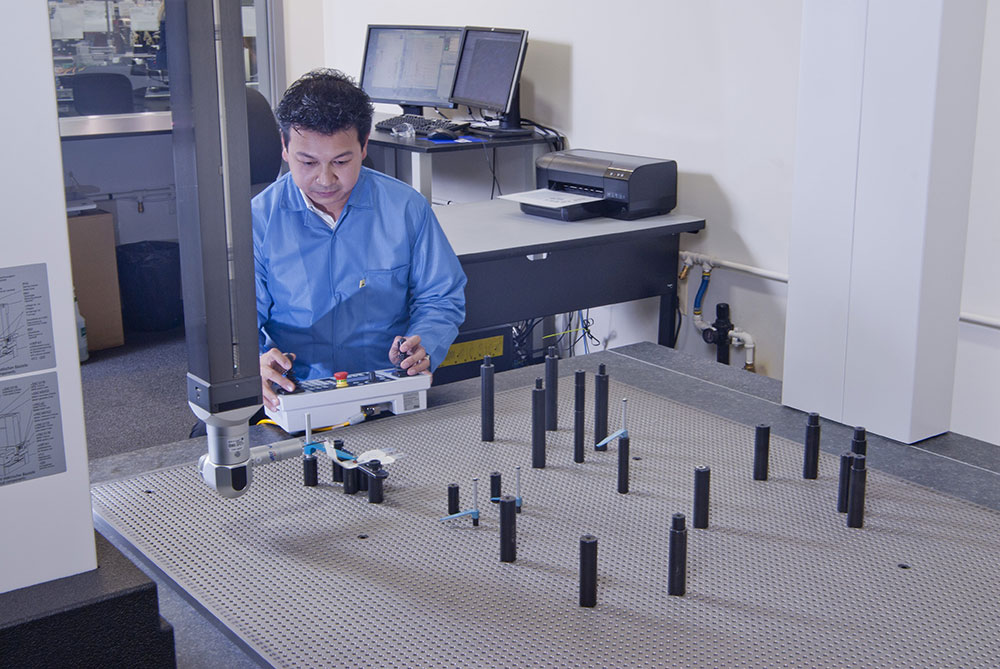
Many factories are using automation to save time and money which they can reinvest into recruiting efforts.
October 8, 2019
Manufacturers continue to face mounting challenges as a result of the labor shortage, including a shrinking talent pool — very few millennials are joining the industry, but baby boomers continue to leave. In fact, predictions show 4.6 million new manufacturing jobs will open over the next 10 years, with 2.4 million remaining unfilled due to the skills shortage. In addition to this, tariffs are further straining manufacturers by increasing demand in a market where there’s not enough people to do the work.
Tariffs are part of a long-term strategy to bring manufacturing back to the U.S., but it won’t be a painless process. While reinvestment in U.S. manufacturing is ultimately positive, the industry will experience increased pressure to meet demand with a shrinking workforce — making it more important than ever for companies to prioritize hiring and retaining top talent.
Manufacturers can’t afford to sacrifice talent amidst these ongoing challenges, but how can they invest in recruiting and retention with limited budgets? Implementing the strategies outlined below will allow companies to boost hiring and retention efforts:
Generally speaking, in the traditional five-day workweek, manufacturers assemble the majority of product during the first shift, creating an inefficient use of equipment during the later shifts. Consolidating manufacturing hours into a four-day workweek leverages equipment costs through higher utilization. When companies utilize their machines 20 hours each day, they can operate with less equipment.
From the employee perspective, there’s the added benefit of having an extra day off. Manufacturers who are already using this method say many of their employees use these extra hours to work a second job, such as driving for a ride-sharing service, while other workers simply enjoy a longer weekend. Flexible hours are especially popular for younger generations entering the workforce who value a more robust work-life balance to pursue interests and projects beyond their full-time job.
Giving employees one or two days off per week will also help attract talent, since many people view extra time off as an attractive benefit. While this strategy may not be feasible for everyone, manufacturers can run a trial period of shorter workweeks to decide if this practice is right for their business.
Thanks to the increased cost savings and efficiency that IIoT technology provides, manufacturers have more room in the budget to allocate money toward other business areas in need of support. As the industry continues to feel strained by the labor shortage, these extra funds can boost hiring efforts and new programs to keep current employees engaged.
Investing in training is another great use of additional resources generated from IIoT devices. Teaching employees new skills, such as how to perform quality checks, monitor inventory or use automated equipment, will keep them interested in the work at hand and prepared for better performance.
A common concern regarding automation is whether it will replace manufacturing employees; however, there are no data points proving robots contribute to increasing unemployment. In fact, robots boost employee engagement by allowing employees to focus on more valuable aspects of their role. Collaborative robots, or cobots, are one example of an automation solution changing the manufacturing industry. Instead of eliminating laborers altogether, cobots work alongside workers to boost efficiency and eliminate hazards. These robots handle the dirty, dangerous or tedious tasks in manufacturing, creating a safer and more productive environment.
The manufacturing industry will continue to evolve, but the work won’t disappear. Automation will enable manufacturers to offset labor costs while allowing workers to focus on higher value tasks, such as product development and learning new skills.
When you involve workers in these types of decisions, communication is no longer transactional, and employees feel like integral parts of the organization. Having a culture where employees can share their opinions and concerns will prevent workers from burnout and manufacturers from losing valuable talent. There are virtually no costs to implement this strategy, but the benefits are numerous in terms of increased morale and a more inclusive work environment — which ultimately attracts and retains employees.
By choosing to invest in employees now, manufacturers set themselves up for future success despite the ongoing challenges in the industry. Pressure from the labor shortage will not disappear anytime soon, meaning there’s sure to be increased strain on the manufacturing workforce to produce goods consistently with less workers. Implementing solutions like flexible workweeks and IIoT devices will improve operating efficiency, allowing manufacturers to reorganize their budget to prioritize hiring and retention.
While the external environment is unpredictable, manufacturers can maintain their competitive edge by creating a culture where employees enjoy coming to work. Treating workers like valued members of the team is always a sure way to attract and sustain talent within your organization.

Tom Serena
About the Author
Tom Serena is the CFO at Morey, an American electronics manufacturer, with extensive experience in accounting and finance. He has demonstrated success driving EBITDA growth in the manufacturing and service sectors, with specific knowledge in lean manufacturing techniques. He oversees Morey’s financial and strategic planning.
Tom earned his bachelor’s in accounting and finance from DePaul University and his MBA from the Lake Forest Graduate School of Management.
In this episode, I sat down with Beejan Giga, Director | Partner and Caleb Emerson, Senior Results Manager at Carpedia International. We discussed the insights behind their recent Industry Today article, “Thinking Three Moves Ahead” and together we explored how manufacturers can plan more strategically, align with their suppliers, and build the operational discipline needed to support intentional, sustainable growth. It was a conversation packed with practical perspectives on navigating a fast-changing industry landscape.